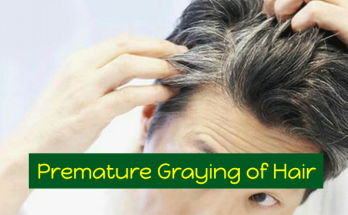Alopecia is an autoimmune disorder in which there is hair loss that could occur anywhere in the body. It occurs when the body’s immune system attacks its own hair follicles, causes excessive hair loss and suppresses hair growth. It occurs in people aged less than 30 mostly and is not contagious at all. It is usually of three main types:
ALOPECIA AREATA: In this type, hair loss occurs in the form of patches. It is also known as spot baldness.
ALOPECIA TOTALIS: This type includes loss of hair all over the scalp. It is more commonly seen in men.
ALOPECIA UNIVERSALIS: This type causes loss of hair from all over the body.
Sometimes, the hair grows back normally over time but in some cases, the growth may occur after years or not occur at all. The patches can start as 1 or 2 coin-sized patches which are usually smooth and round. More patches may develop, or the problem may stop itself and no more patches appear. Psychological stress or any prior major illness (physical stress to the body) may also lead the immune system to attack the hair follicles and cause alopecia.
Read Also: Hair Loss Causes in Men and Women, Diagnosis and Treatment
Some people may have a genetic predisposition to alopecia and may be born with this condition. Another major reason for alopecia may be due to exposure to chemotherapy in cancer patients. Some conditions related to alopecia include thyroid disease, hay fever, atopic dermatitis and even mental illnesses like depression and anxiety.
DIAGNOSIS:
If you notice excessive hair loss and wake up to a large number of hair strands on your pillow or sheets, you should consult a doctor. As alopecia is a skin disorder, the best specialist who can treat it is a dermatologist. Ideally, a dermatologist can tell by a simple look if it is in fact alopecia. However, Trichoscopy is used to confirm the diagnosis.
TREATMENT:
The patches of hair loss may regrow spontaneously or not at all. However, there have been great advancements in medicine and the condition can be treated easily. The following treatment options are now readily available everywhere.
INTRALESIONAL CORTICOSTEROID INJECTIONS:
Corticosteroids are injected into the alopecic patch using a small needle and are repeated monthly or after every 6 weeks. These injections are given by a dermatologist only. A common side effect includes the formation of “dells” which are small depressions in the skin, but they usually heal over time.
TOPICAL MINOXIDIL:
A 5% Minoxidil solution can be applied to the scalp daily once or twice, which stimulates hair growth. Alone, the solution may not be effective but if used in conjunction with topical corticosteroids, it shows better and faster results.
TOPICAL CORTICOSTEROIDS:
Corticosteroid helps in reducing the inflammation around the hair follicles and prevent further hair loss. They are available in different forms such as ointments, creams, lotions and come in variable strengths. The use of corticosteroids is highly effective in initiating hair re-growth.
ANTHRALIN CREAM OR OINTMENT:
Anthralin is a very potent medication which shows results of hair growth in 8 to 12 weeks. It can cause mild yellow-brownish discoloration of the patch’s skin, so it is usually applied for a limited amount of time before it is washed off.
Hair loss is quite a traumatic experience for many people as your scalp hair is one of the first qualities you notice in a person. It attributes to the person’s physical appearance and makes people self-conscious. Losing hair, especially in prominent patches can make people feel embarrassed too. Hence, if you or anyone experience hair loss or develops alopecia, consulting a dermatologist to start immediate treatment is ideal.




